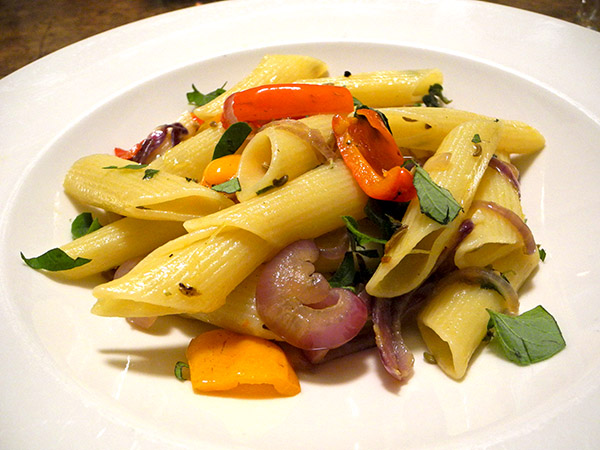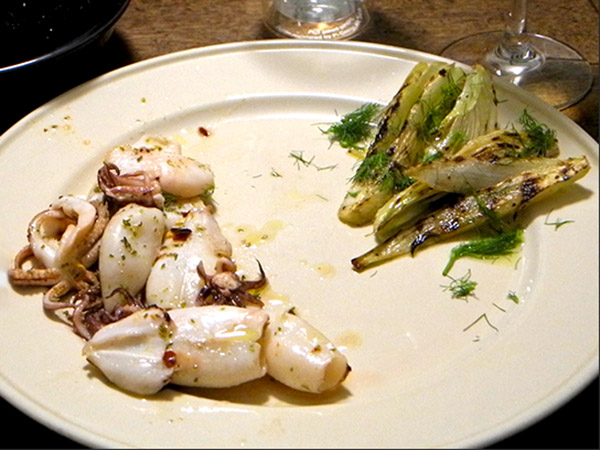It’s very hard for me to imagine anyone dreaming up this recipe for the first time. It wouldn’t seem to be a natural approach for preparing any fish, but its author, Mark Bittman, says, “The recipe can be finished with almost any firm fish fillet.” Here we have a piece, or pieces, of a familiar, undramatic white fish fillet, and slices of white potato, paired with tons of bay leaves and almost a cup of the strongest, most bitter black olives around. The whole idea seems so counter-intuitive, and yet, except for approaches that are even more simple, like this one, I consider it one of the best fish recipes I’ve ever come across. It’s also one of the easiest, and nearly the most foolproof.
- Three monkfish fillets from Blue Moon Fish Company, weighing just under a total of a pound, and almost a cup of pitted black oil-cured olives, roasted on top of a bed of thinly-sliced and seasoned German Carola potatoes (yellow-fleshed, buttery) from Berried Treasures Farm which had already been roasted in the same pan, until slightly crispy, with a generous amount of olive oil and 15 or so bay leaves from Westside Market, the monkfish finished with a sprinkling of chopped bronze fennel from Norwich Meadows Farm
- a small salad of wild arugula from Lani’s Farm, dressed with good olive oil, a small squeeze of organic lemon, salt, and freshly-ground black pepper, topped with one tiny heirloom tomato, segmented, from Berried Treasures
- the wine was a French (Rhone) white, Côtes du Rhône Samorëns Ferraton Père & Fils 2013
- the music was Sibelius, Symphony No. 2, with Paavo Berglund conducting the Helsinki Philharmonic Orchestra, which premiered it in 1899, when it was conducted by the composer




